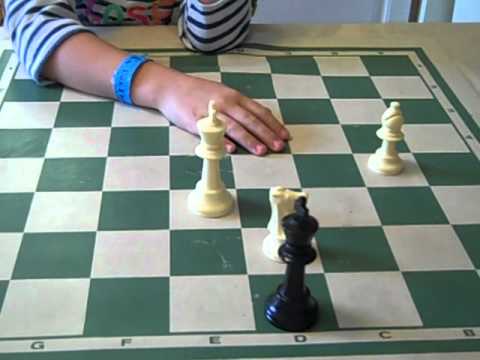INTRODUCTION
Finally we have arrived to the most difficult “elementary” checkmate – The bishop and knight checkmate.
First of all I would like to enter a short theoretical discussion. There is much to be said about the point of learning this checkmate in great detail.
Because the main argument against bothering yourself with this relatively complicated mechanicsm is the probability of its occurence over the board.
I can talk from my experience. During the course of the last 6 years I have played around 150 tournament games.
Not even once was I even close to reaching the afore mentioned endgame. To be honest, that is pretty lucky for me, since I am not at all certain that I have fully mastered the checkmate.
And the fact that I am writing a post about the very same checkmate merely reminds me of a joke about the university professor, who complains to his colleague about his students:
“Imagine, I explain them the theorem for the first time, and nothing.
I explain the theorem for the second time, and still nothing.
I explain the theorem for the third time. Even I finally understand it, but they once again nothing..”

Therefore, a very good question is whether one should focus on other areas of chess instead of the specific checkmate that is very unlikely to appear over the board.
Too be honest, I don’t have a very convincing answer against that. It would make me quite a hypocrite to advocate learning this checkmate as a must, when I have gone for so many years without bothering to do it.
And also, there were quite stronger players who embarassed themselves in this area of the chess game. Check this video of World Chess Champion Anna Ushenina, or this game by a strong grandmaster Vladimir Epishin, for instance.
I think that not learning the bishop and knight checkmate isn’t something I should be very proud of. I think that learning the bishop and knight checkmate should be considered the basic chess culture.
It was quite lucky that I have never had the opportunity to exercise it over the board, because it would be quite shameful to lose the half point because of your own chess incompetence.
Additionaly, there is an argument that learning the bishop and knight checkmate deepens the understanding of the coordination of these two minor pieces. And that can be very important factor in the middlegame.
To sum up, there are both PRO ET CONTRA arguments considering the bishop and knight checkmate. But my opinion is that it can’t do much harm to study it, and it also shouldn’t consume much time.
In the remainder of the post we will initially consider the basic mating picture. Then we will introduce the typical position with the so called W MANEOVRE, which is crucial in performing the checkmate. Finally, an example of the whole checkmate consisting of forcing the black king in the corner will be presented.
BASIC MATING PICTURE
The most important thing to remember about the bishop and knight checkmate is that it typically occurs with the black king in the corner whose colour is THE SAME TO THE COLOUR of the white bishop. (Please note that the Black will once again be the weaker side of this checkmate).
Some typical mating pictures are shown on the diagrams below:
It is important to note that these aren’t the only possible mating pictures. For instance, there is also the possibility of mating the king on the edge of the board, as depicted on the diagram below:
However, considering that Black plays the optimal defensive moves, mating the king in the right corner is the only way of doing so. A big mistake by black is neccessary in order to allow the other form of the bishop and knight checkmate.
W MANEOVRE
Having in mind the things said above, Black’s perfect defence involves running in the CORNER OF THE OPPOSITE COLOUR OF THE WHITE BISHOP.
White’s aim is to force the king into the adjacent corner without allowing the king to escape. The key of doing that is the so called W maneovre.
To get the better idea behind the maneovre (and the name behind it), please consider the following diagram:
THE WHOLE CHECKMATE
{Please consider the following starting position}
CONCLUSION
Phew… This was very lenghty and hard. Still, I hope this post has given you idea behind performing this complex checkmate, or at least clarified that it is not THAT DIFFICULT.
The only thing I can advise from this point onwards is … PRACTICE, PRACTICE, PRACTICE.
On this link, you can practice the checkmate against the chess computer.
Any comments, suggestions and improvements are welcomed very much.
Good luck 🙂

